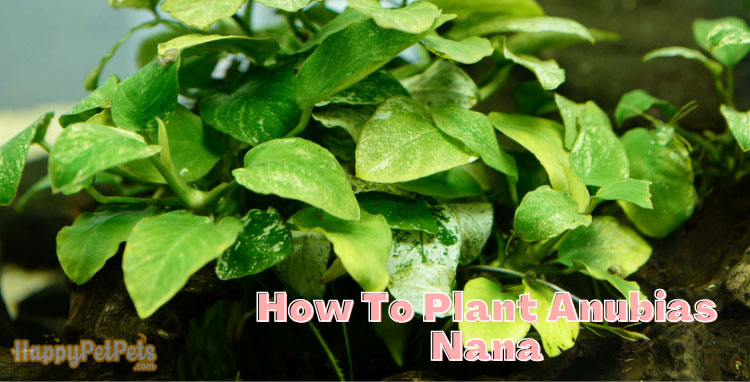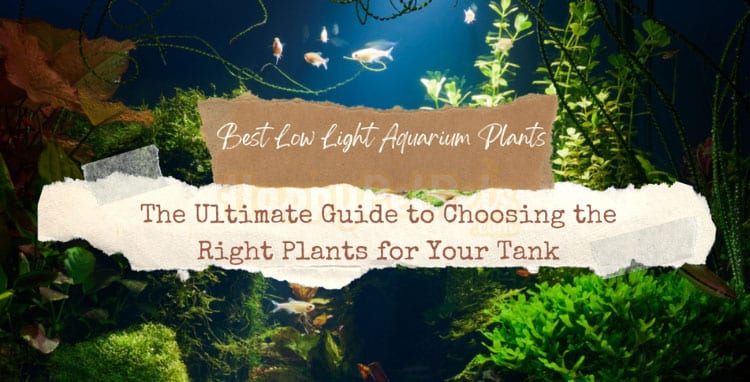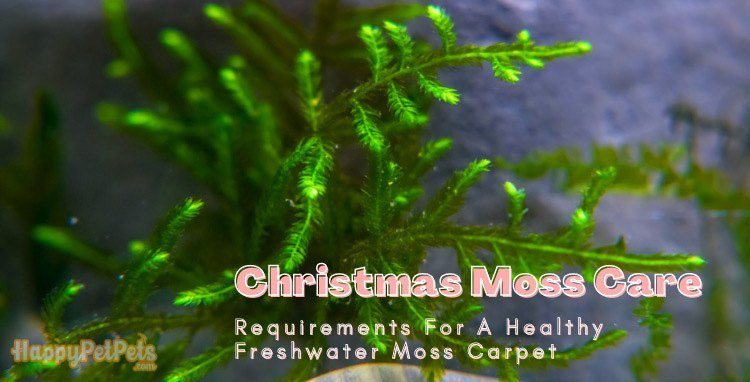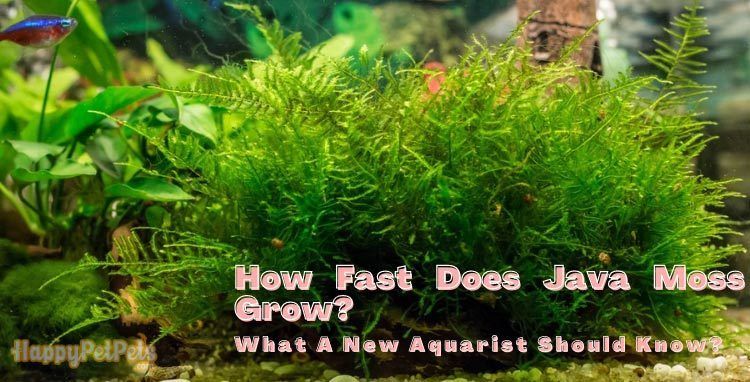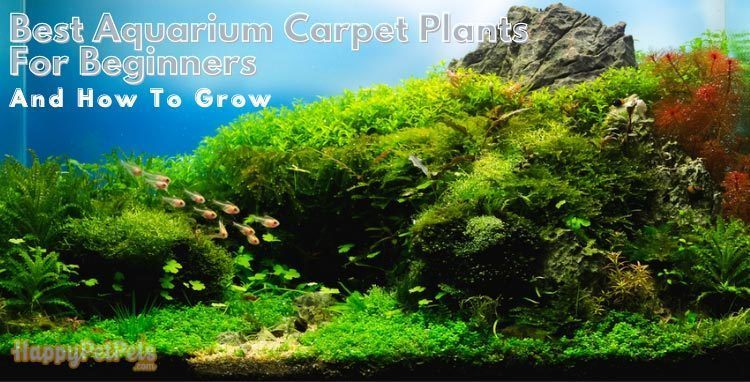In western Africa, the Anubias Nana is a flowering plant found near river banks. In the wild, it is seldom seen growing completely buried in the environment; instead, it is more often found growing semi- or fully immersed on logs or large roots. For its thick, leather-like leaves, it’s also known as “the plastic plant that grows.”
In addition to being big, pointed and dark green, the leaves of this plant are arranged in low bunches. The leaf’s central vein is clearly apparent, with diagonal lines going from the center to the leaf’s periphery. How To Plant Anubias Nana
- Family: Areceae
- Care level: Easy
- Growth rate: Slow
- Maximun size: 5.7 inches
- Minimum tank size: 10 gallons
- Water conditon: 72-82°F, pH 6-7.5, 3-8 KH
- Lighting: Low-moderate
- Propagation: Rhizome division
- Placement: Foreground to background
Appearance of Anubias Nana
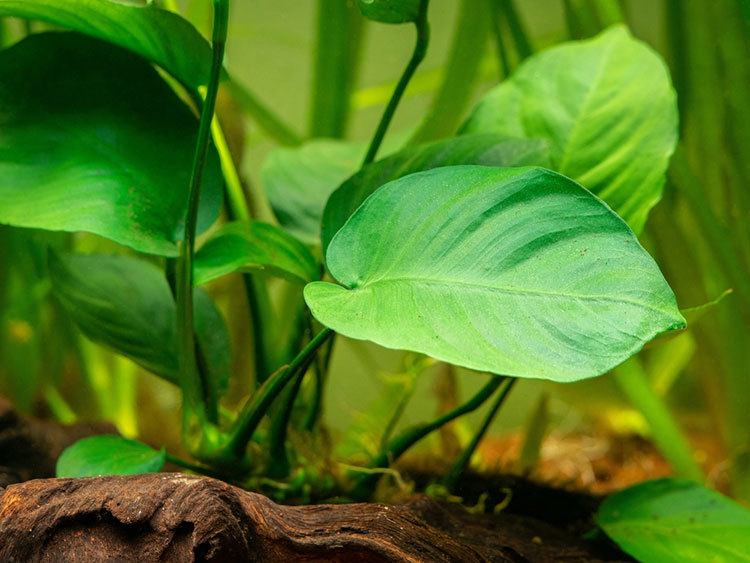
Detail of a Anubias
Anubias nana has tiny wide leaves. It is a hardy plant with a thick, dark green stem. Depending on the tank’s conditions, the maximum height is around 7.5 inches.
Due to its short length, this plant mostly covers the lowest floors. Each stem is securely entrenched in the substrate and does not float on top of the water. White roots anchor the stems in place. As the plant develops, the roots burrow deeper and deeper into the substrate until they are completely submerged.
The dark green leaves form a teardrop shape from the stem, which is common in many plants.
A creamy white flower may be seen on this shrub from time to time. Underwater, it may blossom in a paludarium when the plant is just partially covered. This makes Anubias Nana a terrific focal point. Blossoms may last up to two or three months after they’ve blossomed.
Some Of The Several Species And Subspecies Of Nana
- ‘Coffeefolia’ anubias barteri var. barteri
- Angustifolia variety of Anubias barteri
- Caladiifolia form of Anubias barteri
- var. of Anubias barteri Glabra
Size of Anubias Nana.
This species of Anubias normally grows to around 7.5 inches (19.05 cm) in length. However, depending on the tank’s circumstances, the plant may grow larger.
Setting Up A Tank For Anubias Nana And Taking Care Of It
Size and Specifications of the Anubias Nana Tank: If you want this plant to thrive in your aquarium, make sure it has the right conditions.
Anubias Nana’s ideal tank size: Ten gallons is the recommended tank capacity for Anubias Nana. The Anubias Nana is a little plant. Keeping it in smaller tanks is possible because of its size.
Anubias Nana’s tank is shaped like this: Because they don’t take up a lot of space, these plants may be placed in any tank form.
Type of Filter: To keep the tank of water clean for the plant, you’ll need a high-quality filter. If the water in the tank is unclean, algae may form. Neither the plant, nor the fish in the tank, will benefit from this. Generally speaking, canister filters are the best option.
Substrate: The Anubias Nana plant prefers a muddy and soft soil for its growth. In order for the roots to develop correctly, they must be able to grip onto the soil. Consequently, fine-grained soils are good for this plant.The substrate should be medium-sized gravel (1-2 mm coarse sand or 2-3 mm coarse sand) and well fed. Because of their size, smaller substrates will not aid in root anchoring, while bigger substrates will collect debris.
Anubias Nana Water Quality Parameters
Warm or Cold? When it comes to temperature, Anubias Nana like water that is between 72 and 85 degrees Fahrenheit.
Flow Rate of Water: For this plant, a low water flow rate is suitable. A boulder or a piece of driftwood is a good choice for anchoring your Anubias Nana plant in your tank if you have strong currents in the water.
PH level: Anubias Nana prefers water with a pH between 5.5 and 7.5. Acidic water is preferred above neutral water.
Hardness of Water: In aquariums with water hardness levels ranging from 2 to 6, Anubias Nana will flourish.
Landscape of the Anubias Nana Tank
The Anubias Nana does not have any particular tank needs. It states that they are tiny and compact, making them ideal for tanks with limited space. It is possible to raise Anubis nana petite in small aquariums if the water quality is regularly checked
Anubias Nana Tank Decorations
The best way to grow Anubias Nana is on rough rocks or driftwood, since its root system thrives when it gets enough light. Burying it will restrict its development and even cause it to perish, despite the fact that it will develop complex root systems under substrate.Tied on driftwood or rocks using fishing line or cotton thread, they look amazing.
Anubias Nana Tank Lighting
Even though this plant can grow in low light (less than 1 W/gal) and high light (more than 4 W/gal), it prefers medium light (between 2 and 3 W/gal).
Anubias Nana Aquarium Nutrition Needs: Do You Have Any Recommendations?
In order to avoid algae development, feeding these plants is only an option when they are part of a densely planted tank with other fast-growing column feeders, such as stem plants and floating plants. Rooted Anubias plants may benefit from a substrate fertilizer in situations like these. Plants benefit from an active substrate because it releases nutrients and takes up nutrients when bacterial colonies build.
How to plant Anubias Nana?

Anubias nana in aquarium
Avoid covering the rhizome if you wish to grow this in a substrate. If the rhizome is covered, it is likely to decay, which might be fatal to the plant. Rather of covering the roots, I left the rhizome exposed when I planted these Anubias in my tank.
One of the best things about Anubias is that it can be mounted to a piece of wood, a rack, or just about anything else you wish to have in your aquarium. I have three ideas about how to go about this:
- Zip ties are a simple and quick method of fastening. In order to keep the plant attached to the item, ties are a terrific option. Because they’re so unappealing, they’re the one drawback.
- Cotton sewing thread may also be used. This is a fantastic alternative to zip ties for attaching Anubias to items, since it is less noticeable and dissolves over time.
- A fast and simple method to attach Anubias to almost any surface is to use super glue.
Floating or Planting, Which Is Better?
It’s a planted species, thus it won’t survive long as a floating plant. Planting this species in the ground or attaching it to decorations will let the roots to develop and wrap around them. This gives you the freedom to decorate in whatever way you see fit.
Fish can live in it, so it serves a practical purpose as well as an aesthetic one. In addition to providing a refuge, the leaves also form regions of shade for fish seeking refuge from the sun. The fact that it is a planted species means that you have more control over the placement of each plant, which is beneficial for aquascaping the tank. This is in contrast to floating plants, which tend to move around.
How to Grow Anubias Nana.
There are certain factors to keep in mind while planting Anubias nana. Avoid planting it in regions with a lot of shadow. Unless they have access to light for photosynthesis, they will perish.
You must ensure that there is enough room between each plant (keep them at least two inches apart). Too many plants in a small area with dwindling resources means that some will perish as a consequence of the competition.
Roots like a soft, muddy riverbed, which is exactly what they’d find in the wild. In general, any fine-grained gravel will suffice.
Via YouTube: How to Grow Anubias
Using Driftwood For Anubias
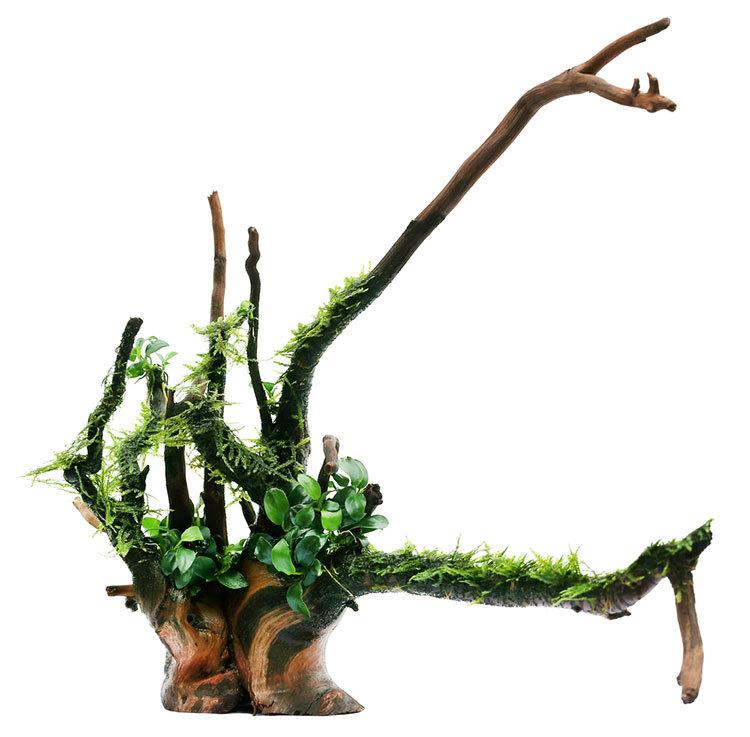
Java moss and anubias tied in bogwood
Anubias may be be attached to driftwood for aquascaping purposes. A transparent fishing line or fine cotton may be used to do this quickly and efficiently. A driftwood or other decoration may be used to hold the plant in place with the help of a piece of cotton. Burying the roots will cause them to decay, so you don’t need to.
It is possible to use cotton thread or small fishing line to secure the roots to the ornaments. ‘ This will keep them in place until their roots are strong enough.
You may remove the cotton ties after a few weeks, when the roots of the plants have firmly established themselves on the surface.
Tank Compatibility & Tank Mates for Anubias Nana
Tank Mates for the Anubias Nana:
You can keep Otocinclus, Stiphodon,… with this plant because they are good algae eaters that can eat the plant’s leaves and other things. These little fish will eat the plant’s leaves. Cherries barbs, Harlequin Rasboras, Danios, are all excellent schooling fish for these creatures.
This is one of very few plants that will not damage goldfish or African cichlids if kept together. African cichlid aquariums’ alkaline water is ideal for these plants, despite their preference for more acidic conditions.
Anubias Nana’s Tank Mates Aren’t Good:Anubias with silver dollars and Oscars is hazardous to grow even if it is one of the finest plants for destructive freshwater tank fish species. Oscar tanks may thrive from growing this plant on the hardscape rather than in the soil.
Anubias Nana Facts to Know:
Blooming along the sides of rivers in western Africa, the Anubias Nana is a natural flowering plant. As a rule, it doesn’t grow completely submerged in the water; rather, it may be found on logs or large roots.
With its leather-like leaves, it has been dubbed “the plastic plant that grows.”
With its massive leaves, the Anubias Nana makes a great mid-ground plant, but it may also be used in the front of large aquariums if periodically trimmed.
The plant will store all of its nutrients in its root system and grow new leaves even if most of the leaves are removed. It will take many years for them to attain their maximum size, and no amount of added light or CO2 can hasten this process.
Conclusion
Anubias Nana is a hardy and reliable plant that does well in a wide range of aquarium settings. The plant is very simple to care for. We recommend this plant to anybody who is just getting started in the hobby!
Related keywords: Anubias types, anubias aquarium plant, anubias nana on driftwood, anubias plant care.

